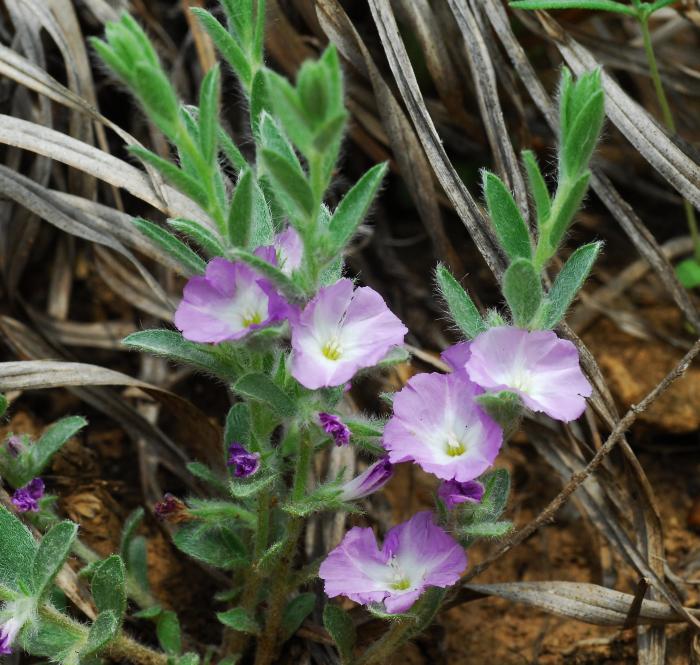Evolvulus nuttallianus Roem. & Schult.
Evolvulus

Native
CC = 8
CW = 5
MOC = 26
© SRTurner
Evolvulus nuttallianus Roem. & Schult.Evolvulus | |
 |
Native CC = 8 CW = 5 MOC = 26 |
© SRTurner |
|
Family - Convolvulaceae Habit - Perennial forb.
Stem - Stems prostrate to ascending, to 20 cm, densely pubescent with relatively long, loosely appressed to somewhat spreading hairs.
Leaves - Alternate, simple, entire. Blades 6-20 mm long, oblong-linear to narrowly lanceolate or narrowly oblanceolate, both surfaces densely pubescent with relatively long, loosely appressed hairs.
Flowers - Axillary, actinomorphic, hypogynous, sessile or short-stalked, the stalk shorter than the subtending leaf, subtended by two bracts. Sepals 4-5 mm, narrowly lanceolate, densely hairy. Corollas broadly funnelform, 5.0-7.5 mm long, pale pinkish or lavender. Stamens 5. Pistil 1, of two fused carpels, each usually with 2 ovules, densely hairy. Styles 2, each distally bilobate with 2 stigmas.
Fruit - Ovoid capsules 3.5-5.0 mm long, 1 or 2 locular, glabrous. Seeds 2.5-3.5 mm long, dark brown to purplish brown.
Flowering - April - June. Habitat - Glades, upland prairies, savannas, openings of dry upland forests. Origin - Native to the U.S. Lookalikes - None. Other info. - This diminutive species is scattered in the southern half of Missouri. The state lies near the extreme eastern edge of the plant's natural range, and it is much more common in the plains and mountain states. The plant is easily recognized by its pastel shaded flowers and furry foliage. It is small and easily overlooked, but a real treat up close. Flowering may be stimulated by recent rainfall. Look for it on dry upland gladey prairies and power line cuts. The plant does well in gardens and makes an unusual subject; however, it can be difficult to find seeds commercially. Photographs taken at Danville Conservation Area, Montgomery County, MO, 6-27-2017, and at St. Joe State Park, St. Francois County, MO, 5-17-2018 (SRTurner). |